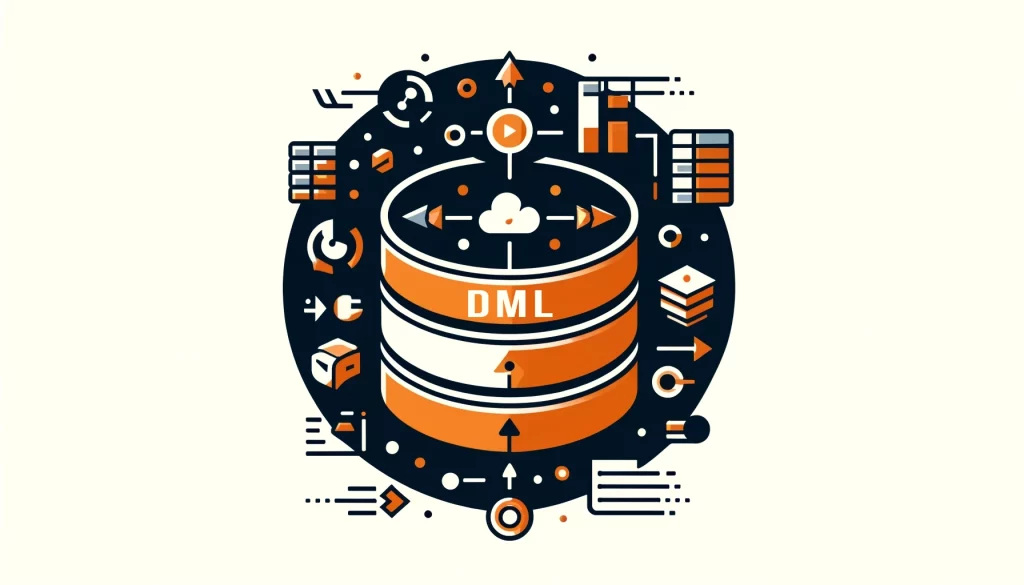
DML: Data Manipulation Language

In modern database systems, managing updates and retrievals efficiently is essential. This is where DML, or data modification language, comes into play. A core component of SQL (Structured Query Language), it allows applications to insert, modify, delete, and query data records—making it critical for everyday operations.
Why DML Data Manipulation Language Matters
DML plays a central role in working with relational databases. It empowers users to perform essential tasks such as inserting, updating, selecting, and deleting records—tasks that drive application logic, reports, dashboards, and user interactions.
Understanding this language is important for developers, analysts, and database administrators working with SQL Server, MySQL, PostgreSQL, or Oracle. These commands form the foundation of CRUD operations and enable reliable data processing.
Modern tools like DataSunrise support secure usage by tracking changes, applying rules, and preventing unauthorized actions—making DML execution safer and more accountable.
This article explores DML concepts, syntax, and practical examples across Microsoft SQL Server, MySQL, PostgreSQL, and Oracle. By the end, you’ll know how these operations work and how to apply them confidently in your database environment.
What is DML?
DML stands for Data Manipulation Language. It’s a subset of SQL that focuses on modifying data stored in tables—through inserting, updating, deleting, or retrieving records. These commands are essential for working with live transactional databases.
This language is critical in most systems for enabling users and applications to interact with data effectively. Regardless of which DBMS you’re using—SQL Server, MySQL, PostgreSQL, or Oracle—the core syntax and principles are consistent.
Understanding Data Modification Language in SQL
Often called DML, data modification language includes SQL commands that change the contents of a database. These are the essential instructions used to manage live transactional data: inserting records, updating existing entries, retrieving results, or deleting rows as needed. Although the term “DML” is more common in technical usage, the concept of a data modification language applies across database platforms.
DML Commands
Here’s how a common data modification language command looks in practice:
INSERT
Use the INSERT command to add new records into a database table. You can specify values for particular columns. For example:
INSERT INTO Employees (FirstName, LastName, Email)
VALUES ('John', 'Doe', 'john.doe@example.com');SELECT
This command retrieves data from one or more tables. Filters can be applied using WHERE clauses:
SELECT FirstName, LastName, Email FROM Employees WHERE Department = 'Sales';
UPDATE
Use UPDATE to modify existing records, based on a condition:
UPDATE Employees SET Salary = Salary * 1.1 WHERE Department = 'Marketing';
DELETE
Removes one or more rows matching a condition:
DELETE FROM Employees WHERE EmployeeID = 1001;
DML in Different DBMS
While DML syntax is fairly consistent across relational database systems, small differences exist. Here’s how the basic commands appear in SQL Server:
INSERT INTO Customers (CustomerName, ContactName, Country)
VALUES ('Awesome Inc.', 'John Smith', 'USA');SELECT ProductName, UnitPrice, UnitsInStock FROM Products WHERE CategoryID = 1;
UPDATE Orders SET ShippedDate = GETDATE() WHERE OrderID = 10248;
DELETE FROM OrderDetails WHERE Quantity = 0;
Now let’s consider NoSQL. While MongoDB uses a different syntax, its operations align with the same goals as DML—managing and querying data efficiently.
Insert:
db.users.insert({user_id: "abc33", name: "sayali", age: 22})Select:
db.users.find({age: {$ne: 22}})Update:
db.users.update({}, {$set: {join_date: new Date()}}, {multi: true})Delete:
db.users.remove({status: "D"})These examples show how MongoDB handles data manipulation. While it doesn’t use SQL syntax, the intent and logic match standard DML operations and reflect common data modification language behavior.
Advanced DML Techniques for Modern Applications
Modern DML implementations go far beyond basic queries. Common Table Expressions (CTEs) allow recursive operations and complex logic in an elegant structure.
Bulk operations improve performance when working with large volumes of data. For example, using INSERT INTO ... SELECT or MERGE allows you to update thousands of rows efficiently.
Window functions are another powerful feature, enabling row-by-row analysis while preserving dataset granularity. They’re especially helpful for financial reports, ranking, and time-based calculations.
These performance-focused approaches to data modification language commands are crucial in high-transaction environments like finance, retail, and real-time analytics systems.
Best Practices for Using DML
Use Parameterized Queries
Always use parameterized queries when inserting or updating user input. This protects against SQL injection and ensures safe execution.
Handle Transactions Properly
Wrap related DML statements in transactions to ensure data consistency. Roll back changes if any part of the transaction fails.
Implement Proper Error Handling
Use error-handling logic to catch failures, log issues, and ensure the application responds gracefully to data-related errors.
Optimize Queries
Use indexes, filter conditions, and avoid unnecessary joins to keep your DML statements fast. Analyze execution plans when queries are slow.
Validate and Sanitize Input
Always validate user input before running DML commands. This reduces the risk of logic bugs, data corruption, and security vulnerabilities.
Use Appropriate Access Controls
Follow the principle of least privilege—grant only the permissions needed to perform required actions. Avoid using admin accounts for routine operations.
Regularly Backup and Monitor
Enable monitoring and auditing of data changes. Tools like DataSunrise can track write operations, detect anomalies, and generate compliance reports. These tools ensure your data modification language operations stay transparent and traceable.
Conclusion
Learning how to use a data modification language is essential for anyone managing structured databases. Whether you’re designing transactional systems, building ETL pipelines, or optimizing performance at scale, DML commands give you control over data in real time.
This article explored the basics of using these commands across different platforms, from SQL Server and PostgreSQL to MongoDB. We also covered advanced strategies and security best practices to ensure data integrity and performance.
Whether you’re just starting out or refining enterprise-level systems, mastering this language is vital for reliable database management.
To take your operations further, consider using DataSunrise for real-time auditing, masking, and rule enforcement. Request a demo to see how we can support your data security strategy.
